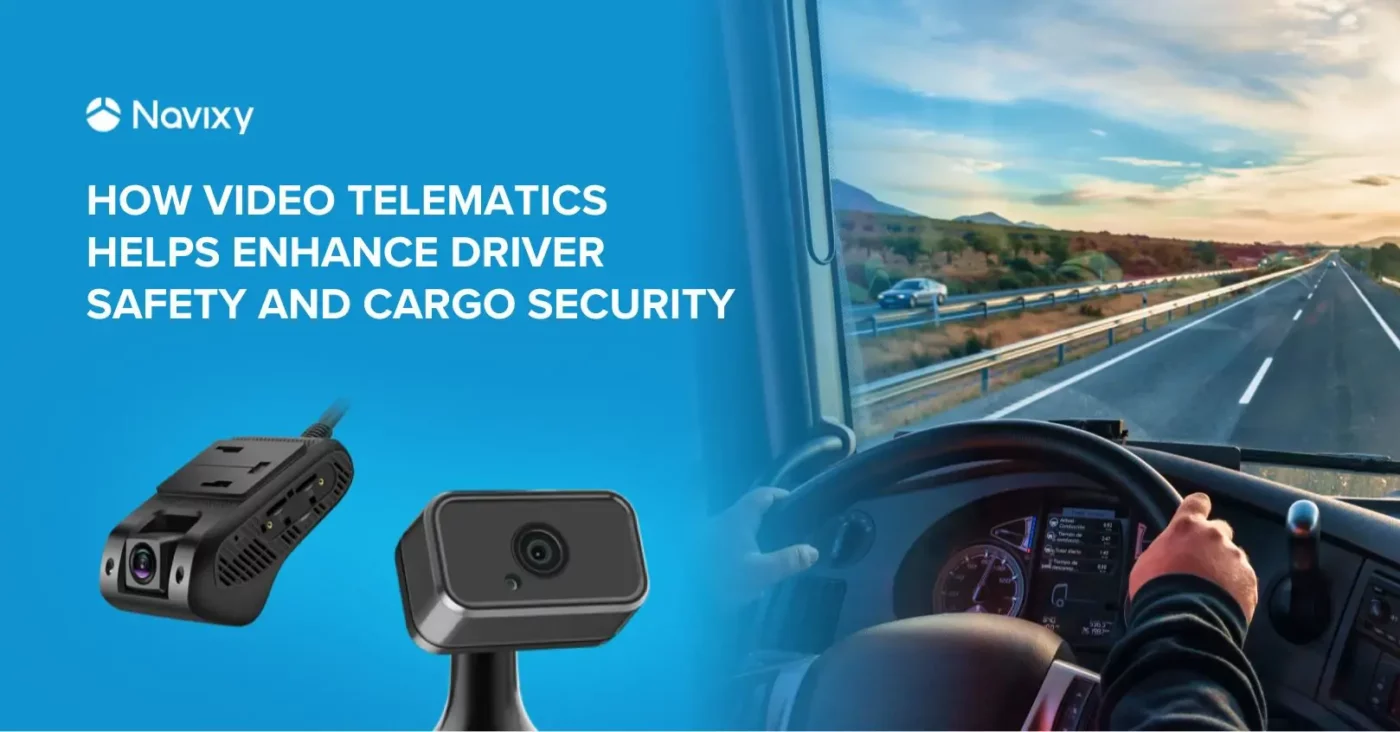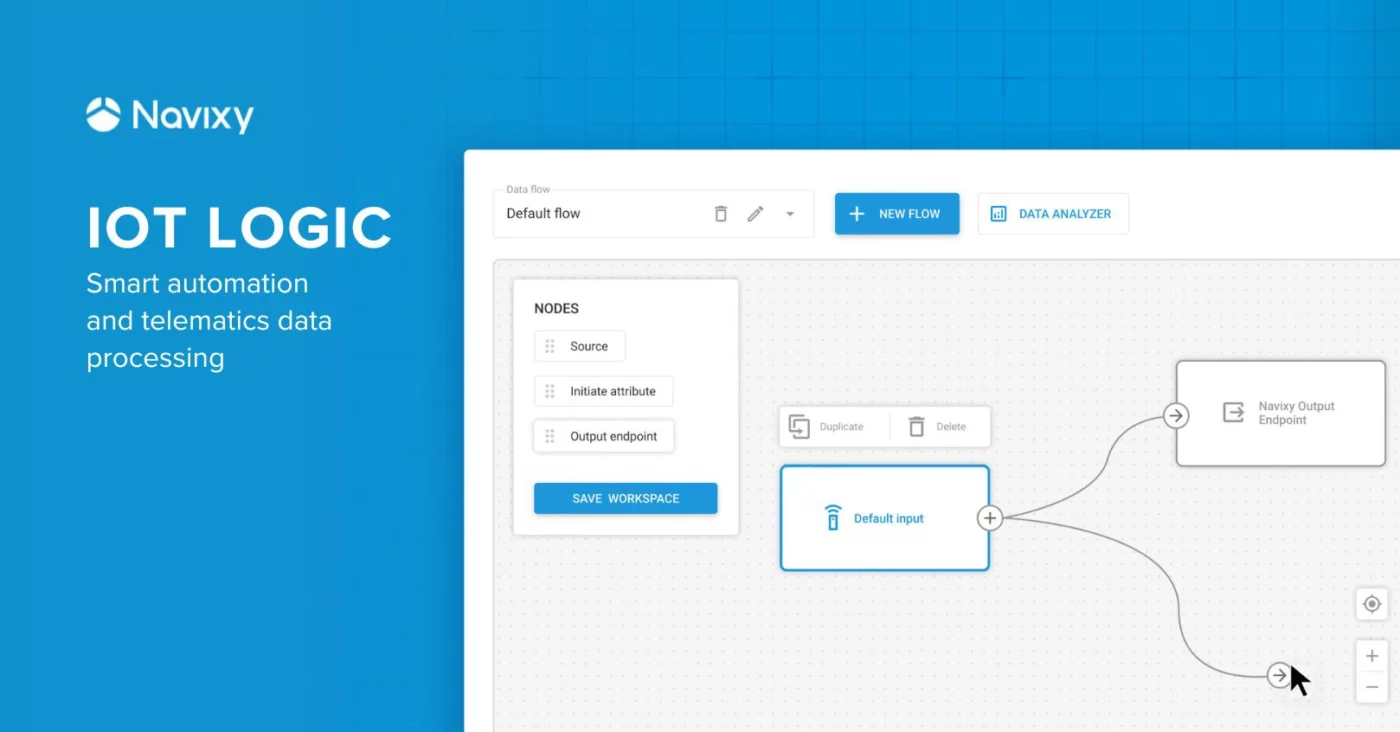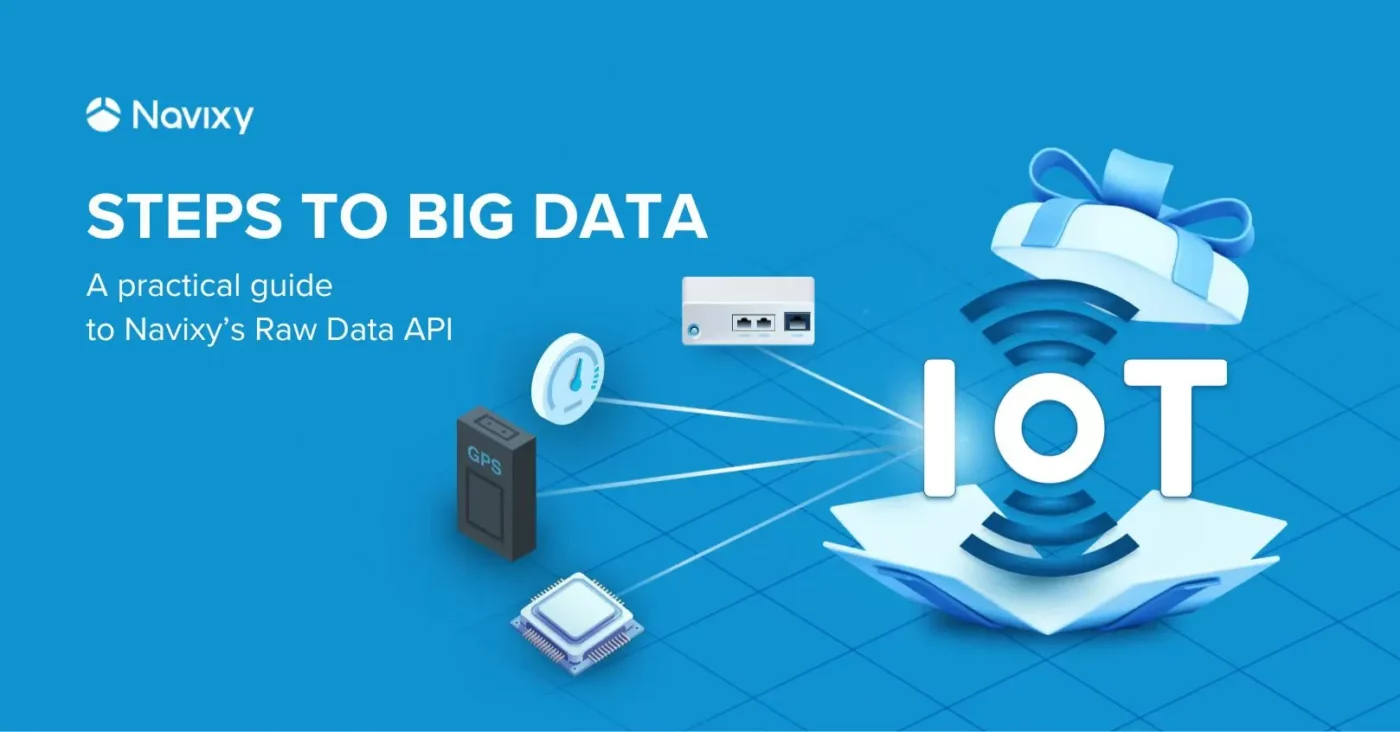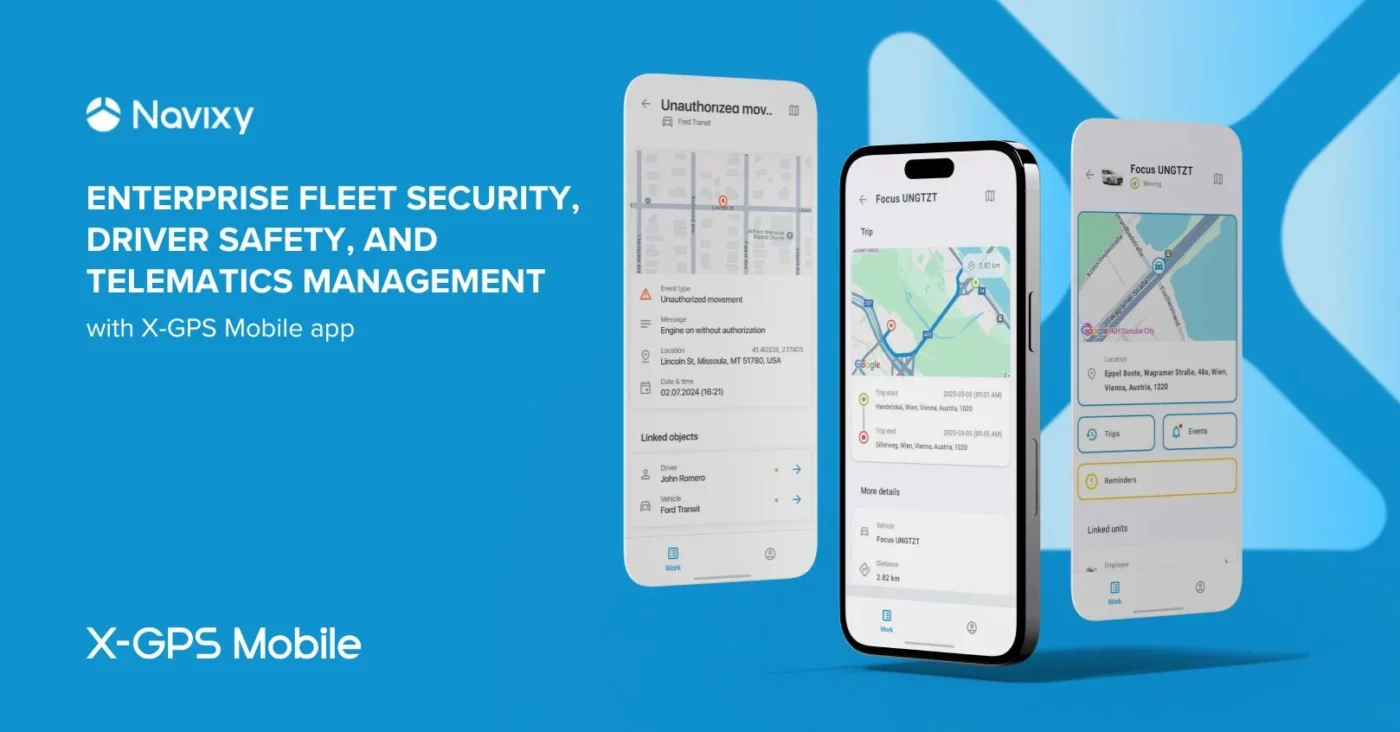- Driver distractions, accidents, and cargo theft create financial and operational risks for fleets, leading to delays, insurance issues, and safety hazards.
- Video telematics systems provide real-time alerts, monitor driver behavior, and offer secure data storage for further analysis, which can solve safety issues and speed up incident resolution.
- We're looking at several devices for video telematics solutions that integrate seamlessly with Navixy and possess the capabilities to enhance fleet management and mitigate risks.
Driver safety and cargo security have long been pressing concerns for fleet management. Urbanization and economic growth have led to more intensive traffic, which, together with overall higher speeds and more powerful vehicles, increases the likelihood of road accidents. Besides, in many regions, for example, Latin America (LATAM), highway robberies have surged in recent years, making cargo theft a significant risk for fleets. At this point, video telematics devices are becoming increasingly necessary as fleet safety solutions.
In this article, we’ll examine how video telematics helps address safety and legal issues and review several video telematics devices you might want to consider.
Video telematics terms glossary
Before we proceed, let’s look at some key terms related to video telematics solutions and the Navixy platform (as we’ll be using it as an example here):
- ADAS (Advanced Driver Assistance Systems) – Advanced systems that help with tasks like collision avoidance, lane-keeping, and proximity detection to other vehicles.
- DMS (Driver Monitoring System) – A system that analyses driver behaviour, detecting distractions, fatigue, or phone use while driving.
- Dashcam – A camera installed in vehicles that continuously records the road and sometimes the interior. It is mainly used for security and as evidence in incidents.
- 4G/4G LTE – Mobile connectivity technology enabling real-time data transmission, such as video and alerts, from the camera to the monitoring server.
- MicroSD – A memory card used for storing videos and data locally on the cameras.
- SOS alert – An safety button integrated into vehicles that silently sends an alert to the monitoring platform, signalling an emergency.
- Forward collision – An ADAS feature that detects the risk of a crash with the vehicle ahead and warns the driver.
- Driver distraction – An event detected by systems like DMS that identifies when the driver is not paying attention to the road, such as using a phone or showing signs of fatigue.
- Harsh braking – An event triggered when the system detects a sudden deceleration, usually an attempt to avoid a collision.
- Aggressive driving – Detected through rapid acceleration, braking, or sharp turns, indicating dangerous driving behaviour.
- GPS/GLONASS – Global positioning systems used to track vehicle locations in real-time, providing precise route and position data.
- Cloud storage – Digital space where videos and alerts generated by cameras are stored, enabling secure access to the information at any time.
Driver distraction and more – fleet management challenges in LATAM
According to a medical study of distraction-related road traffic collision injuries, driver distraction accounts for about 80% of crashes and 65% of near-collisions. The situation is global, making it one of the significant challenges the logistics and transportation industry faces. With driver safety, undoubtedly, being a priority, fleet management companies are also concerned about cargo damage, which often results from collisions and leads to substantial financial losses.
But that's not the only issue the industry deals with. The challenges might differ from region to region, but as we speak of LATAM, we can pinpoint the high rate of highway robberies and legal complexities in accident resolution or insurance claims.
Let's break it down real quick.
Vehicle and cargo theft and highway robberies
The region experiences elevated instances of vehicle-related crimes, including carjackings and cargo theft. These security threats pose substantial risks for businesses in logistics and transportation, leading to financial losses and operational disruptions. For example, in Mexico, the Association of National Transporters (ANTAC) estimates the yearly cost of cargo theft to be around 2.3 billion pesos – or $137 million. At this point, logistics or transportation companies might require a solution that would automatically alert fleet operators about incidents, allowing for faster response, as well as video evidence of events for further analysis by the police and legal actions.
Legal complexities in accident resolution
Handling accidents can be particularly challenging due to varying laws across countries, which can complicate determining liability. With different legal frameworks in each region, resolving claims can take longer, leading to extended downtime for fleets. These delays can impact operations and increase the administrative burden on fleet managers, diverting time and resources away from core business activities.
As you can see, those are serious issues hampering fleet operation and being a source of headache in the logistics and transportation industry. No wonder, fleet operators constantly seek for better solutions to prevent potential health, life, and material losses.
What is video telematics?
It's the case where we can point fingers at video telematics as a solution, offering fleet managers real-time visibility, actionable insights, and automated responses to critical events. Paired with smart telematics data management systems, video telematics devices become indispensable tools for mitigating risks and ensuring smooth operations.
Let’s look at how it works in more detail.
Video telematics combines video recording technology with telematics systems to provide a real-time view of vehicle performance and driver behavior. It involves advanced devices, like dashcams and multi-channel cameras (MDVR), recording and transmitting visual data as sensors detect key events such as sudden braking, acceleration, impacts, etc. The data then gets to a management platform for processing and analysis, enabling alerts and appropriate incident responses. It also helps further safety improvements and legal compliance.
How does video telematics work – a Navixy’s case example
We believe the best way to demonstrate how video telematics works in this context is to explain using an example. Let’s look at the real-life case one of the Navixy partners faced.
A security company with a dashcam installed in the truck encountered an incident on the Mexico-Tlaxcala highway. Armed individuals attacked the moving vehicle, firing multiple shots and aiming their weapons at other cars heading in the same direction. The armed individuals then boarded the truck and forced the driver out at gunpoint. They inspected the cargo log and stole the shipment.
Afterward, the partner contacted Navixy support to obtain the evidence required to determine liability and proceed with a criminal complaint.
As shown, the device sent a harsh driving alert to Navixy, which triggered the video recording.


What’s harsh braking?
This event is triggered when the system detects a sudden deceleration of the vehicle. For example, if the driver abruptly brakes to avoid a collision, the camera will detect the event and send an alert to the platform. Additionally, the system activates video recording of the braking moment, allowing one to watch the situation in real time or review it later to verify the causes of the incident.

Video telematics system architecture
Now, let’s take a closer look at the device-platform system’s architecture in this case.

The device sends a video alert to the platform with a specific time, for example, 12:23:23.
The platform activates ANY alert with the same time stamp, for example, 12:23:23.
The platform displays the alert as a video event, regardless of the event_id received from the device.
In other words, the video alert may be triggered by entry 1, but the platform must receive the video simultaneously with the alert trigger. The platform will then attach the device's video alert to the corresponding alert on the platform.
It is crucial to activate at least some platform alerts based on video synchronization.

Leveraging video telematics to solve driver distraction, safety, and legal issues
The previous example shows how dashcams work in a particular scenario. Now, let’s look at how they overall address key challenges like driver distraction, safety, security, and legal compliance in more detail.
Real-time video alerts and event-triggered recordings
Modern video telematics systems offer fleet managers two key safety tools: real-time alerts and event-triggered recordings. When critical events such as harsh braking, sudden acceleration, or collisions occur, these systems immediately notify the telematics platform and activate corresponding video clips. This instantaneous feedback enables managers to assess situations in real-time or retrospectively, ensuring effective incident response and preventive measures.
Dashcams equipped with SOS alerts help drivers discreetly signal emergencies, such as hijackings or medical issues, without drawing attention. Whether preventing forward collisions or addressing security threats, these features enhance situational awareness and enable swift action.
Monitoring driver behavior with ADAS and DMS
Driver behavior monitoring relies on ADAS and DMS technologies, offering precise insights into driving patterns and safety risks. These devices track key metrics such as speed, acceleration, braking patterns, and aggressive driving behaviors. Additionally, DMS detects driver distractions like phone use or signs of fatigue.
When a device identifies unsafe behaviors, such as tailgating or drifting out of a lane, the system triggers real-time alerts to the driver and fleet managers. These warnings prompt immediate corrective actions, helping to mitigate road accident risks and improve road safety. For a business, such insights might lead to cargo loss prevention and lower maintenance costs, improving the operation over time.
Secure cloud storage for video evidence
Cloud storage turns video telematics into an effective evidence management tool. Videos and alerts generated by dashcams are securely uploaded to cloud platforms, safeguarding them against tampering or loss. It ensures the proper documentation and access to the data on critical incidents when necessary.
This feature proves particularly valuable in theft-prone regions or after accidents. Fleet managers can quickly retrieve and share video evidence with law enforcement or insurers, speeding up the process of criminal complaints or insurance claims.
Integrating video alerts with GPS tracking data allows for synchronizing video footage with precise location and timing details, enabling comprehensive incident reconstruction. Managers can access visual evidence and the vehicle’s speed, location, and trajectory, creating a complete picture of events or verifying adherence to routes and legal requirements.
Automation for critical situations
Automation is crucial for video telematics in emergencies such as hijackings or robberies. Advanced systems automatically detect irregularities such as harsh braking, route deviations, or impacts, triggering predefined responses without requiring driver intervention.
Predefined actions might include initiating live video streaming, sending alerts to security teams, or remotely turning off the vehicle’s engine in cargo theft scenarios. (It's worth noting that such measures must be carefully implemented to ensure they do not escalate the threat, particularly during armed robberies.) Automation reduces reliance on human input for timely and effective responses in critical situations.
Integration with advanced camera systems
Last but not least, the devices you're using matter, as the effectiveness of video telematics depends on the device's quality and capabilities. Choosing advanced dashcams or multi-channel systems with high-definition recording, ADAS features, and event-triggered video capture is key to ensuring data synchronization, real-time alerts, and comprehensive incident analysis within telematics platforms.
This way, selecting suitable devices ensures robust safety measures, cargo security, and compliance with legal requirements necessary for fleet efficiency.
Device overview and recommendations from Navixy support
Now, as we speak of LATAM, we would like to overview several devices available on the market capable of addressing the issues we’re highlighting in this article. Here are some recommendations from the technical support team, in addition to being the most reliable models based on our experience:
| Features | Howen Hero-ME40-02 | JIMI JC400/P | JIMI JC261/P |
 |  |  |  |
| Video resolution | Full HD 1080p | Full HD 1080p | 720p |
| Field of view | 140° | 130° | 110° |
| Connectivity | Not specified | 4G | 4G LTE |
| Storage | MicroSD up to 256 GB + cloud | MicroSD up to 128 GB + cloud | MicroSD up to 64 GB + cloud |
| ADAS functions | Distraction, yawning, collision, no seatbelt | Collision, aggressive driving | Collision, aggressive driving, distraction |
| Integrated GPS | Yes | Yes | Yes |
| SOS button | Yes | No | No |
| Two-way audio | No | Yes | No |
The events supported by the platform would be as follows:
| Event type | JC400 | JC400D | JC400P | JC261 | JC261P | Device event code | Alert type on the platform |
| SOS alarm | ✔ | ✔ | ✔ | ✔ | ✔ | SOS | Pressing the SOS button |
| Crash event | ✔ | ✔ | ✔ | ✔ | ✔ | CRASH | Car сrash |
| Vibration | ✔ | ✔ | ✔ | ✔ | ✔ | VIBRATE | Vibration sensor |
| Overspeed detected by the tracker | ✔ | ✔ | ✔ | ✔ | ✔ | OVERSPEED | Overspeeding (by hardware event) |
| Harsh acceleration | ✔ | ✔ | ✔ | ✔ | ✔ | RAPIDACC | Harsh driving |
| Harsh braking | ✔ | ✔ | ✔ | ✔ | ✔ | RAPIDDEC | Harsh driving |
| Harsh turning | ✔ | ✔ | ✔ | ✔ | ✔ | RAPIDTURN | Harsh driving |
| Fatigued driving | ✘ | ✔ | ✔ | ✔ | ✔ | DRIVE | Fatigued driving |
| Yawning | ✘ | ✔ | ✔ | ✔ | ✔ | YAWN | Fatigued driving |
| Eyes closed | ✘ | ✔ | ✔ | ✔ | ✔ | CLOSEEYES | Fatigued driving |
| Distraction / Head down | ✘ | ✔ | ✔ | ✔ | ✔ | DISTRACTION | Driver distraction |
| Smoking | ✘ | ✔ | ✔ | ✔ | ✔ | SMOKING | Driver distraction |
| Phone call | ✘ | ✔ | ✔ | ✔ | ✔ | PHONECALLING | Driver distraction |
| Face not detected | ✘ | ✔ | ✔ | ✔ | ✔ | MISSINGFACE | Driver distraction |
| Forward collision | ✘ | ✘ | ✔ | ✔ | ✔ | FORWARDCOLLISION | Advanced Driver Assistance Systems (ADAS) |
| Vehicle too close | ✘ | ✘ | ✔ | ✔ | ✔ | VEHICLETOOCLOSE | Advanced Driver Assistance Systems (ADAS) |
| Lane departure | ✘ | ✘ | ✔ | ✔ | ✔ | LANEDEPARTURE | Advanced Driver Assistance Systems (ADAS) |
Howen Hero-ME40-02

The Howen Hero-ME40-02 is a monitoring camera specifically designed for fleets. It offers the following technical features:
- Video resolution: Full HD 1080p.
- Field of view: 140° for broad road coverage.
- Storage capacity: Supports microSD cards up to 256 GB, with live video streaming capabilities to the cloud.
- Recording modes: Dashcam with continuous recording while the vehicle is in operation, along with cloud storage to ensure footage is always available.
- Smart alerts: Facial recognition to detect distractions such as yawning, using a phone, or not wearing a seatbelt.
- SOS button: Integrated for sending a direct alert to the platform in emergency situations.
- Integrated GPS: Enables real-time vehicle tracking and route monitoring.
JIMI JC400

The JIMI JC400 camera is another excellent option for vehicle tracking and monitoring, focusing on safety and telematics.
- Video resolution: Full HD 1080p for clear recordings.
- Field of view: 130°, providing adequate coverage of both the road and the vehicle interior.
- 4G connectivity: Live streaming via a 4G network for real-time monitoring from anywhere.
- Storage: Compatible with microSD cards up to 128 GB, with cloud storage for data security.
- Safety features: Collision detection and aggressive driving alerts (harsh braking, sharp turns).
- Two-way audio: Enables real-time communication between the driver and the control center through the camera system.
- Integrated GPS and GLONASS: For real-time tracking and route logging.
JIMI JC261
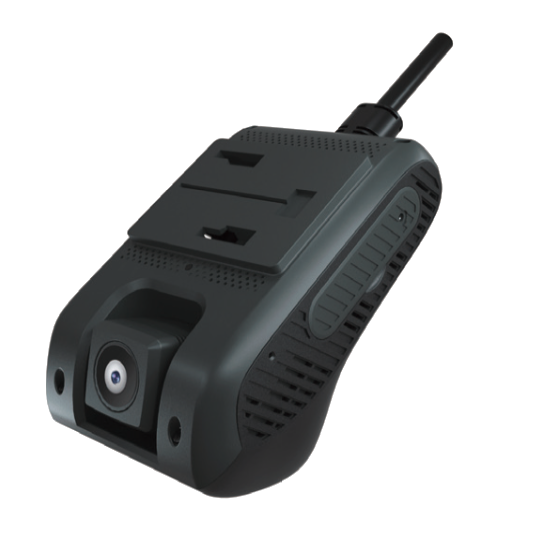
The JIMI JC261, on the other hand, offers a more compact yet equally effective solution for commercial vehicle monitoring.
- Video resolution: 720p, providing adequate video quality for monitoring purposes.
- Field of view: 110°, sufficient to cover the front view and detect incidents.
- Connectivity: 4G LTE for live video streaming.
- Storage: Supports microSD cards up to 64 GB, with an option for cloud storage.
- Safety features: Alerts for collisions, aggressive driving, and distracted driving.
- Integrated GPS: Enables real-time tracking and detailed route reporting.
Wrapping up
As you can see, investing in advanced video telematics systems is no longer just a good-to-have option for businesses in the logistics and transportation industry. Video telematics has proven to be a valuable solution that helps drastically improve driver safety and cargo security, as well as legal compliance. Their capabilities allow fleet operators to take proactive measures, mitigate risks, and speed up incident resolutions, thus improving overall fleet operation.
As demonstrated in the Navixy partner's case, video telematics can be an ally in ensuring accountability, efficiency, and peace of mind in the face of growing logistical complexities.
It's worth noting that video telematics devices achieve their full potential when integrated with a robust telematics management platform that supports their capabilities, ensures compatibility, and unlocks the complete spectrum of functionalities they offer.
